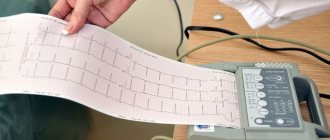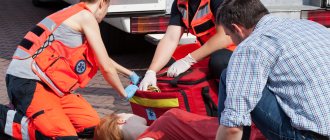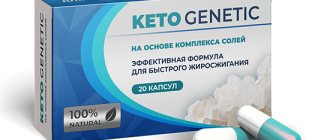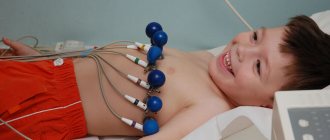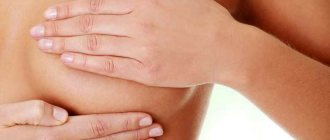Causes of heart pain
Pain is a defensive reaction: this signal is the first to draw attention to changes in the functioning of organs.
A painful sensation in the heart area (cardialgia) may signal one of the dangerous diseases of the heart or blood vessels that participate in its blood supply. Sometimes pain that appears to be heart pain is actually caused by other illnesses. The reason for this phenomenon is the location of the structures of the peripheral nervous system, the irritation of which causes pain. Chest pain can be associated with the spine, intercostal nerves, esophagus and even the skin.
Cardialgia can be imitated by:
- Diseases of the musculoskeletal system: osteochondrosis of the thoracic spine, pain in the intercostal muscles.
- Pathologies of the nervous system: inflammation of the intercostal nerves, non-inflammatory intercostal neuralgia, panic attacks; vegetative-vascular dystonia, psychosomatics (pain that occurs due to psychological reasons without objective disturbances in the functioning of organs).
- Vascular pathologies: aortic aneurysm (thinning and dissection of the vessel wall), pulmonary embolism (PE) - blockage of a vessel with a blood clot.
- Diseases of the gastrointestinal tract: pathologies of the esophagus, gastritis, stomach ulcers, pancreatitis and other diseases of the pancreas, diseases of the gallbladder.
- Respiratory dysfunction: pneumonia (inflammation of the lungs), pleurisy (inflammation of the film of connective tissue that covers the lungs and chest from the inside), bronchial asthma, pneumothorax (penetration of air into the cavity where the lungs are located), tuberculosis and other pulmonary diseases.
- Pathological manifestations on the skin: herpes zoster (infection with the herpes virus in the form of a blistering rash).
Also, pain in the heart area can be a manifestation of the action of toxins - some narcotic substances and aggressive chemicals.
However, heart disease is suspected in every case of chest pain: first of all, it is necessary to exclude myocardial infarction, unstable angina, pulmonary embolism and other life-threatening heart diseases.
Risk factors for heart pain
First of all, it is important to assess the likelihood of cardiovascular disease: if it is high, any discomfort in the patient’s heart area may be a sign of acute pathology.
Risk factors for cardialgia can be divided into uncontrolled (which cannot be corrected) and controlled (lifestyle features, nutrition, medication, treatment of concomitant diseases).
Uncontrollable risk factors include:
- age over 55 years;
- male gender;
- genetic predisposition;
- racial characteristics.
Acquired risk factors most often arise due to non-compliance with the principles of a healthy lifestyle. Poor nutrition, lack of physical activity, smoking, emotional reactions to stress, alcohol abuse and other bad habits significantly increase the risk of cardiovascular disease.
Also controllable risk factors may be associated with concomitant diseases and borderline conditions. These include:
- overweight and obesity;
- high blood pressure;
- diabetes mellitus and prediabetes;
- imbalance of blood lipids.
On the other hand, there are positive factors that prevent the development of cardiovascular diseases (Fig. 1).
Figure 1. Factors that influence the development of cardiovascular diseases Source: MedPortal
Chest pain in children
Acquired heart pathologies in childhood are a rare situation. Pain in the heart area in children is most often associated with congenital conditions or diseases that are not related to the cardiovascular system:
- congenital heart defects;
- diseases of the gastrointestinal tract;
- neuralgia;
- inflammatory processes in the lungs;
- chest injuries.
Young children cannot indicate the specific point where the heart hurts or describe their sensations. Therefore, parents should be extremely careful to recognize alarming symptoms in time and consult a doctor.
Heart pain during pregnancy
Cardialgia during pregnancy is not always associated with cardiac disorders. Most often, discomfort in the chest of the expectant mother is associated with adaptation: the vessels of the unborn child are built into the woman’s circulatory system, and the heart needs to “rebuild” to perform its functions in new conditions.
Also, the cause of heart pain during pregnancy can be:
- anemia,
- toxicosis and gestosis - severe pregnancy,
- intercostal neuralgia,
- disturbances in the reactions of the nervous system,
- cardiomyopathy.
Heart pain can seriously frighten a pregnant woman. But don’t panic: in such a situation, it is important to remain calm and go to the hospital immediately.
Cardiac dyspnea: causes of development and treatment methods
Shortness of breath is a sign of heart failure. They appear after lifting weights or doing physical exercise. In healthy people it is a temporary phenomenon, not a pathology. In patients with heart failure, shortness of breath is a frequent, obsessive symptom that varies in type, intensity and duration. As a rule, it is a sign that you need to take action and seek help from doctors.
Cardiac dyspnea, types
According to the classifier, cardiac dyspnea has a 4-stage course.
- Stage 1 – low-intensity, unnoticeable.
- Stage 2 with the appearance of increasing shortness of breath during intense physical activity.
- Stage 3 with the appearance of unpleasant symptoms even at rest, with moderate loads.
- 4 – severe stage with disturbing shortness of breath at night in a supine position, when blood flow to the heart is increased, which clearly indicates heart failure, stagnation of blood in the vessels and lungs.
There are 2 types of cardiac dyspnea.
- Physiological shortness of breath during exertion, excessive physical activity, but quickly passing when a person is at rest.
- Pathological, as a consequence of diseases of the cardiovascular system, changes in the depth and frequency of breathing. The patient begins to breathe rapidly, swallowing air, but does not feel complete satisfaction. Hypoxia and oxygen starvation develop.
Shortness of breath and weakness become obsessive phenomena during the course of chronic heart failure. Spasms of small halos and failure of heart function occur against the background of increased pressure in the lungs. The condition begins to negatively affect peripheral circulation, leading to a decrease in oxygen saturation or a complete cessation of oxygen supply to the brain.
8
24/7
A feature of CHF in patients is the appearance of shortness of breath even at rest. Additional signs:
- blueness of lips, lower extremities;
- cough;
- swelling on the face.
Symptoms intensify at night against the background of redistribution of blood from the peritoneal cavity and lower extremities to the chest and creating excessive stress on the heart, specifically in a supine position.
Complications of chronic heart failure:
- pulmonary edema, bronchospasm, signs of suffocation in case of fluid accumulation and blood stagnation, blockage of the airway;
- multiple organ failure or Cheyne-Stokes, when breathing periodically increases or becomes intermittent.
4th degree of cardiac shortness of breath, pain in the heart - a serious condition. The patient is forced to take a sitting position to reduce the symptoms of attacks and the load on the heart. Breathing becomes intermittent and uneven. Oxygen starvation and brain asphyxia are harbingers of stroke and heart attack.
Risk factors
The risk group includes elderly people, or those diagnosed with congenital heart disease or mitral valve prolapse.
Cardiac dyspnea can be provoked by:
- left heart failure;
- congestion in the lungs;
- decreased cardiac output;
- psychovegetative factors: fear, anxiety, neuroses, depression, excitement;
- disorders of the autonomic system.
Causes
The main causes of occurrence are physiological or cardiac:
- lifting weights;
- climbing stairs;
- grueling runs over long distances;
- excessive sweating;
- VSD, psychovegetative syndrome during vegetative-vascular crisis;
- obesity with a feeling of suffocation and lack of oxygen;
- tachypnea, shallow rapid breathing due to complications of a viral infection the day before;
- deformation, curvature of the spine;
- scoliosis of the chest;
- anemia;
- pregnancy (3rd trimester) as the load on the heart and the body as a whole increases;
- cardiopathy;
- cardiac ischemia;
- narrowing of the mitral valve (stenosis);
- arterial hypertension;
- acquired (congenital) heart defect;
- myocardial infarction.
8
24/7
Symptoms
Cardiac shortness of breath is a sign of circulatory failure, irritation of the respiratory center, and the development of heart failure. If you ignore and do not consult a doctor, you can expect:
- decreased oxygen supply to the blood;
- violation of pulmonary ventilation;
- development of tissue hypoxia, oxygen starvation;
- attacks of arrhythmia, tachycardia, angina pectoris.
The main symptom of cardiac dyspnea is difficulty in inhaling, first after physical exertion, and over time - at rest, in a supine position. Additional signs:
- wheezing in the lungs;
- chilly hands;
- swelling of the legs, increasing in the evening;
- increased heart rate.
Heart failure is characterized by arthopnea (shortness of breath in the lying position) or a paroxysmal form of development in severe disease with the appearance of signs:
- paroxysmal cough with discharge of foamy (transparent) sputum and cold sweat;
- cyanosis of the skin;
- weakness;
- brokenness.
Signs indicate stagnation of blood in the pulmonary circulation, swelling of the mucous membrane, effusion of fluid from the vessel into the lumen of the pulmonary alveoli.
Diagnostics
A cardiologist can recognize the true causes of shortness of breath, and you should turn to him for help and treatment.
Help: Pulmonary and cardiac dyspnea are different symptoms. In pulmonary cases, phlegm accumulates in the lungs; in cardiac cases, blood circulation in the pulmonary circulation is disrupted.
The task of doctors is to identify the primary causes of the manifestation and listen to complaints of shortness of breath in patients. Diagnosis is differential. Methods:
- EchoCG;
- isotope ventriculography: a study that reveals the measurement of blood fractions during emissions during the patient’s physical activity or while at rest;
- coronary angiography;
- chest x-ray;
- electrocardiogram.
It is important to create a complete picture of the disease and identify possible damage to the vessel in order to develop the correct treatment tactics.
Treatment at different stages
If breathing is shallow due to ARVI or influenza, which often happens in children, then the condition normalizes as the incubation period of the underlying disease passes. But the insidiousness of viral infections is complications, the transition of the inflammatory process to the bronchi, which leads to breathing problems, bronchospasms, shortness of breath, and wheezing.
If shortness of breath occurs when walking and is caused by respiratory failure, then the main goal is to reduce the load on the heart and expand the bronchial ducts to remove accumulated mucus.
Medicines:
- methylxanthines (Eufillin);
- anticholinergics (Platifillin);
- antihistamines (Fenistil, Pipolfen, Claritin);
- antispasmodics (No-Shpa);
- anticholinergics (Berodual, Atrovent);
- adrenomimetics (Clenbuterol, Salbutamol);
- glucocorticoids in inhalations;
- glycosides (Digoxin, Korglykon);
- ACE inhibitors for the prevention of heart failure;
- diuretics (Furosemide) to reduce the load on the cardiovascular system.
If laryngospasms are detected in children with the appearance of shortness of breath, as a complication of influenza infection (bronchitis), leading to impaired respiratory functions, then gentle therapy is prescribed:
- mustard plasters;
- anticholinergics (Platifillin);
- drugs for thinning sputum (ACC, Ambroxol, Mucaltin, Bromhexine);
- diuretics (Hypothiazide, Veroshpiron, Furosemide, Diacarb) to reduce congestion;
- calcium antagonists (Nitrosorbide, Captopril) in the treatment of pulmonary hypertension;
- expectorants to reduce the load on the heart, dilate the bronchi, relieve shortness of breath.
Additionally, oxygen therapy is carried out by supplying humidified oxygen to regulate respiratory functions. Patients are recommended breathing exercises and physiotherapy.
It is important to understand that cardiac dyspnea is a symptom. Treatment should be aimed at eliminating the underlying causes that led to the condition. If it is not possible to compensate for heart failure and eliminate shortness of breath with medications, then surgery to install a pacemaker, transplant the ventricles of the heart, and eliminate valve defects is indicated.
Surgical methods are not used if shortness of breath is a temporary phenomenon, and disturbances in the cardiovascular system after diagnosis are minor.
Complications
Chronic heart failure (CHF) is dangerous when gas exchange and metabolism are impaired. If the underlying disease is not treated at an early stage, shortness of breath will become a constant concern and lead to complications:
- cardiac cardiac asthma with attacks of suffocation;
- feeling of lack of air;
- drop in blood pressure;
- swelling in the lungs.
As pressure increases in the pulmonary vessels and pulmonary circulation, the following are observed:
- attacks of suffocation;
- bubbling in the region of the heart;
- swelling of the pericardial veins;
- cold sweat;
- emphysema due to congestion in the pulmonary circulation;
- pneumosclerosis due to decreased elasticity of blood vessels and tissues in the lungs;
- cyanosis;
- suffocation, coughing at night;
- hemoptysis;
- luminal obstruction, pulmonary embolism.
Forecast
Shortness of breath is not an independent disease, but a sign of cardiac pathology and impaired gas exchange in the lungs. It is impossible to get rid of shortness of breath until the underlying disease is cured. Cardiac pathology leads to mortality in the case of dystrophic changes in 60% of patients. It is possible to compensate for deficiency and prolong life at the initial stages of development.
Disease prevention
Cardiac dyspnea is associated with impaired cardiac function. Pathology can be avoided if:
- lead a healthy lifestyle;
- to refuse from bad habits;
- move more, walk in the fresh air;
- eliminate stress, nervousness, overexertion;
- dose physical activity;
- limit your intake of table salt;
- keep blood pressure levels under control;
- ventilate the room more often;
- raise the head of the bed by 5° so that your head rises slightly during sleep;
- do not delay diagnosis or go to the doctors if shortness of breath has become an obsessive phenomenon even at rest.
Heart failure and pulmonary edema are complex diseases with negative consequences. If shortness of breath appears at rest, this is a signal that it is no longer possible to remain idle. You need to make an appointment with a doctor and undergo a full diagnosis so that the specialist can draw up an effective treatment plan.
8
24/7
What are the dangers of heart pain?
Pain in the heart area is a dangerous symptom that may indicate the development of a fatal disease. According to statistics, heart disease causes death in 30% of adults in all countries of the world.
If cardialgia is a manifestation of a heart attack, ignoring it can lead to irreversible consequences:
- necrosis - “death” of part of the heart muscle (infarction),
- development of arrhythmia - irregular heart rhythm,
- heart failure - inability of the heart to perform its function,
- sudden death.
In the event of a myocardial infarction, when a vessel leading to the heart is blocked, minutes count: blood flow must be restored within 1.5 hours. If you seek medical help late, changes in the affected area of the heart will be irreversible: the organ will no longer be able to work effectively (Fig. 2).
Figure 2. What is myocardial infarction Source: prostress.by
How to understand if pain is related to heart disease
The thought of heart disease is the first thing that comes to mind when pain appears in the chest. In this case, it is better to consult a doctor once again than to one day regret not taking your health seriously enough.
In order to promptly recognize cardialgia, it is important to know the localization of heart pain, their characteristics and features. A test will help determine the cause of the pain.
Where does your heart hurt?
The heart is located behind the sternum with a slight shift to the left. It is reliably protected by the chest and can change its location depending on the size and structure of the bone structures.
Cardialgia is usually not “point”: it is impossible to indicate a specific place where the pain is localized. In addition, the sensations often radiate—spread to other parts of the body.
The typical location of pain in the heart is directly behind the sternum or behind the chest on the left. In most heart diseases, including the most dangerous ones, heart pain moves:
- to the right side of the chest,
- under the left shoulder blade,
- in the axillary areas,
- in the shoulder and left arm, sometimes symmetrically on the right side,
- on the lower jaw and teeth,
- to the cervical spine,
- to the area under the sternum.
The area of pain in heart disease can be extensive (Fig. 3). Irradiation of cardialgia can cause difficulties in diagnosing heart diseases: symptoms in this case will indicate diseases of other organs.
Figure 3. Localization and irradiation of pain in the heart. Source: MedPortal
How does your heart hurt?
The characteristics of cardialgia depend on the disease that causes pain. First of all, a distinction is made between periodic and constant chest pain. This is important for determining the nature of possible changes in the heart.
Periodic pain
If pain in the heart is associated with a sharp narrowing of the vessels that fill the organ with blood, sharp but short-lived pain occurs - most often up to 30 minutes (Fig. 4). Taking heart medications helps the symptoms disappear quickly. A nitroglycerin tablet under the tongue is especially effective: the drug helps to immediately dilate the arteries and restore blood flow.
Figure 4. Short-term pain in the heart. Source: MedPortal
Constant pain
Prolonged acute pain in the heart most often signals dangerous disorders of the organ, for example, myocardial infarction. In this case, nitroglycerin does not help: poor circulation causes irreversible changes in the heart muscle.
Prolonged dull, aching, tingling pain may indicate chronic diseases of the cardiovascular system: heart defects, cardiomyopathies, inflammatory processes.
The nature of the pain
In the diagnosis of cardiovascular diseases, pain intensity plays an important role. For example, during an acute myocardial infarction, the sensations can be so intense that patients are given strong pain medications to prevent the development of shock.
Pain in the heart can be varied: sharp, burning, stabbing, pressing, aching, pulling, dull. Symptoms depend on the underlying disease, but the nature of the pain cannot accurately determine their cause: this requires certain research methods.
Also, pain syndrome is often complemented by other symptoms of diseases. For example, with acute pain in the heart, the rhythm often goes astray: there is a feeling of interruptions in its work, frequent or intermittent heartbeat.
Cardialgia can occur against a background of high blood pressure (BP). In these cases, signs of hypertension are added to the symptoms. Some heart diseases, on the contrary, are accompanied by hypotension - a decrease in blood pressure.
Myocardial infarction
When cardialgia manifests itself, it is first of all important to exclude acute myocardial infarction (MI) - the death of part of the heart muscle. Characteristic signs of MI:
- typical heart pain - behind the sternum, with reflection in the left arm, under the left shoulder blade, in the neck, lower jaw, ear;
- the nature of the pain is acute, burning, with extensive damage - unbearable;
- the severity of the sensations does not depend on the intake of nitroglycerin;
- the duration of pain is at least 30 minutes, with a large area of infarction it can last several hours or days;
- the pain is accompanied by a sharp deterioration in the condition, additional symptoms appear - dizziness, pallor, nausea, shortness of breath, sweating, rapid heartbeat, anxiety, fear of death.
It is important to know the first signs of myocardial infarction - this can help save a person’s life (Fig. 5).
If symptoms that are characteristic of a myocardial infarction develop, you must call 112 and seek emergency medical help. It is important to act quickly: you have only 1-2 hours to “save” the myocardium.
Figure 5. First signs of myocardial infarction Source: MedPortal
Heart pain in various heart diseases
If the diagnosis of myocardial infarction is excluded, it is necessary to look for another cause of heart pain.
Information about the location, nature and duration of sensations helps to establish a preliminary diagnosis (Table 1). Table 1. Features of pain in major heart diseases.
| Pathology | Description of pain |
| Angina pectoris (ischemia - narrowing of the coronary arteries) | Localization: behind the sternum with transition to the left shoulder blade, shoulder, jaw Character: strong, pressing, burning Duration: up to 20 minutes, after taking nitroglycerin it goes away within 2–3 minutes Features: most often the symptom occurs in the wake of emotional or physical stress, accompanied by a feeling of fear |
| Myocarditis - inflammation of the heart muscle | Localization: depends on the severity of the condition Character: dull, nagging, aching Duration: at the beginning of the disease the pain is short-lived, then it can become constant Features: does not go away after taking nitroglycerin |
| Heart valve diseases | Localization: depending on the location of the affected valve Character: depends on the pathology, most often aching, pressing Duration: can be long and even permanent Features: often accompanied by shortness of breath, aggravated by exposure to cold air, accompanied by irregular heartbeat, rapid heartbeat |
| Cardiomyopathies - changes in the size and function of the heart | Localization: depends on which parts of the heart are changed, can be localized or widespread Character: pulling, aching, squeezing Duration: may be constant or paroxysmal Features: often goes away after nitroglycerin tablets, but not always |
| PE - pulmonary embolism | Localization: left behind the sternum Character: depends on the level of arterial damage, more often - stabbing. Intense pain may be a sign of damage to the large branches of the pulmonary artery (this condition is life threatening) Duration: depends on the severity of the condition Features: shortness of breath develops, blood pressure decreases, pulse quickens, nitroglycerin does not work |
Important! Pain in the pericardial region is not always a sign of heart problems. But sometimes the heart hurts in a different way than usual. Some cardiac pathologies may manifest as pain in other organs, which significantly complicates the diagnostic search. For example, there are atypical forms of myocardial infarction:
- painless - does not show characteristic symptoms for a long time,
- abdominal - pain is localized in the abdominal area, simulating gastritis or pancreatitis,
- asthmatic - resembles an asthma attack,
- arrhythmic - the main symptom of the disease is not pain, but heart rhythm disturbances.
Heart pain and intercostal neuralgia
One of the common types of “non-cardiac” chest pain is intercostal neuralgia. The condition occurs due to damage to one of the nerves that are located between two ribs (Fig. 6).
Figure 6. Cause of pain with intercostal neuralgia. Source: c-clinica.com
The pain becomes so acute that it can be confused with a symptom of a heart attack.
But there are several features that make it possible to distinguish a neurological disease from a serious heart pathology (Table 2). Table 2. Differences between pain in heart disease and intercostal neuralgia
| Sign | Cardialgia | Intercostal neuralgia |
| Localization of pain | Pain sensations are concentrated behind the sternum, but the patient cannot indicate a specific place | The patient can accurately indicate the point of pain localization |
| Nature of pain | Burning, squeezing | Aching, shooting, pulling |
| Pain intensity | With angina pectoris, the pain lasts less than 15–20 minutes, with myocardial infarction - more than 30 minutes. The severity of pain depends on the severity of the lesion. With extensive myocardial infarction it is so intense that it becomes unbearable | The pain worries around the clock, its intensity does not depend on the time of day |
| Irradiation - spreading of pain | On the left side of the body - in the shoulder blade, shoulder, neck, arm | Between the ribs, along the intercostal nerves |
| Features of pain | Pain in the heart does not depend on movements, coughing, breathing | Pain increases when touching the intercostal spaces, when turning the body, walking, deep breathing, coughing |
| Taking nitroglycerin | Helps in most cases | Does not help |
| Connection with hypothermia | No | Often occurs in connection with neuritis - inflammation of the nerve due to hypothermia |
In addition, the following symptoms are characteristic of intercostal neuralgia:
- burning sensation on the skin at the site of the damaged nerve;
- impaired skin sensitivity, numbness, tingling in the chest area;
- muscle stiffness - difficulty moving on the side of the affected nerve.
However, it is impossible to exclude serious diseases only by assessing the pain syndrome: for this you need to do an electrocardiogram (ECG) and undergo other examinations.
Why does it occur
The causes of palpitations vary. It can occur with normal, high or low blood pressure.
Strong heartbeat is normal in the following cases:
- During physical activity: sports, physical work, weight lifting, fast walking, running, and so on.
- Under emotional stress: fear, excitement, joy, anger, irritation, etc.
- When body temperature rises, for example, during infectious diseases. When t increases by 1 degree, heart rate increases by 10 beats per minute.
- In case of an allergic reaction.
- From overeating.
- From drinking energy drinks.
- During menopause.
The heart begins to beat faster at normal pressure during physical activity, after eating, in moments of emotional experiences
The causes of pathological tachycardia are various diseases, including:
- cardiosclerosis;
- myocardial dystrophy;
- arrhythmia;
- anemia;
- vegetative-vascular dystonia;
- disturbances in the functioning of the endocrine system;
- hypoxia;
- heart defects.
Finding the exact cause of an increase in heart rate can only be done through comprehensive diagnostics.
When should you see a doctor?
Seeking medical help is an important issue on which a person’s life may depend. It is better not to wait until the pain reaches its peak, but to immediately call an ambulance.
Even if pain does not initially seem like a serious symptom, it is better to be safe than sorry. However, some features of pain may indicate that acute myocardial infarction and other severe pathologies are unlikely.
Signs of a “relatively safe” variant of heart pain:
- the pain is stabbing in nature and lasts several seconds - most likely the cause of the symptom is overexertion or short-term dysfunction of the heart;
- it becomes easier during movements - in case of heart disease, pain intensifies with exertion;
- pain is associated with breathing - in acute heart diseases, shortness of breath may occur, but pain when inhaling, rather, indicates pathologies of the pulmonary system.
You should definitely not delay seeking medical help if:
- acute unbearable pain with a characteristic spread to the left shoulder blade lasting longer than 5 minutes;
- pressing pain in the heart for 30 minutes or longer;
- a sharp increase or decrease in pressure;
- shortness of breath or difficulty breathing;
- loss of consciousness;
- repeated episode of chest pain.
In any of these conditions, you must immediately call an ambulance - the wait can cost not only your health, but even your life.
Acute pain in the heart is an indication to immediately consult a doctor and get a cardiogram, even at a young age. And after 40 years, both women and men should be especially wary of myocardial infarction. In such situations, it is better to be safe than to waste time and not have time to save the heart.
Treatment of heart pain
Pain is a symptom and therefore cannot be treated in itself. The method of therapy is selected only after determining the cause of pain.
Treatment begins with lifestyle changes: it is important to include all recommended ways to prevent heart disease in your list of daily activities.
Diet plays an important role: fried and fatty foods and sweets are excluded from the diet. The daily menu should contain a sufficient amount of fresh vegetables and fruits and fiber.
The patient is also offered to add physical activity to his daily routine - the duration and types of exercise are determined individually, depending on the identified disease.
Drugs for the treatment of heart disease are prescribed in a course or for long-term use. It is important to control blood pressure: for hypertension, medications must be taken daily, following the doctor's recommendations.
How to treat
Treatment is prescribed depending on the cause. It is important to relieve the patient of unpleasant symptoms: dizziness, headache, nausea, shortness of breath, fainting.
Two methods are usually used: drug therapy and folk remedies.
Treatment with drugs
To combat tachycardia you need to take the following medications:
- Sedatives. These include natural remedies based on medicinal herbs. This is motherwort, valerian, Novo-passit. They can be produced in tablets, drops, tinctures.
- Antiarrhythmic. These tablets normalize the heartbeat. You cannot drink them on your own, only as prescribed by a doctor. These include Flecainide, Verapamil and others.
Verapamil is a drug that allows you to quickly stop an attack of tachycardia
To treat tachycardia, tablets of four groups are taken:
- Cardiac glycosides (Dogoxin).
- Beta blockers (Atenolol, Concor).
- Sedatives (Novo-passit).
- Antioxidants (Mexico, Preductal).
Herbal treatment
Most often, mint, lemon balm, chamomile, St. John's wort, motherwort and others are used to treat palpitations at home.
To normalize heart rate and blood pressure, you can prepare an infusion of herbs. To do this, you will need to take a spoonful of dried valerian root, yarrow herb and lemon balm. Mix the ingredients, pour boiling water and place in a water bath for 40 minutes. When it cools down, strain and drink.
Another effective remedy is hawthorn. The aqueous extract of the fruit should be taken three times a day, 20 drops per ¼ glass of water before meals. To prepare, you will need a tablespoon of crushed fruits, which you need to pour a glass of boiling water, put on low heat and cook until half the original volume remains.
An infusion can be prepared from hawthorn flowers. To do this, pour a glass of boiling water over the flowers (a teaspoon) and place in a water bath for 15 minutes. Take half a glass twice a day before meals.
Prevention
Preventing a disease is always better than treating it. Therefore, even at a young age, you should think about the state of the cardiovascular system (Fig. 7). It is especially important for people at risk to follow all measures to prevent heart disease:
- to refuse from bad habits,
- control weight (body mass index should be less than 25),
- follow the principles of proper nutrition,
- avoid excess salt in dishes,
- exercise,
- avoid stressful situations and learn to react correctly to them,
- control blood pressure.
It is also important to promptly treat diseases of other organs. Hormonal diseases, inflammatory processes and other pathologies can cause heart complications.
Figure 7. Principles of prevention of cardiovascular diseases Source: MedPortal
How to help yourself with palpitations
If a person has an attack of tachycardia for the first time, and he does not suspect that he has pathologies, he needs to do the following:
- open a window indoors;
- unbutton the collar of your clothes;
- wash with cool water;
- If possible, you should definitely lie down or at least sit down, but do not remain on your feet.
- take medicine (it can be corvalol, valocordin, validol, valerian, motherwort).
Valerian will calm not only the heart, but also the nerves
Many people panic during an attack of tachycardia, especially if it happened at night. You need to calm down and start breathing correctly. If your heart rate increases, you need to take a deep breath, then hold your breath, push and exhale slowly. Relief does not occur immediately, so it is recommended to do the exercise for about five minutes.
If your heartbeat is strong, you can try coughing.
Another remedy that helps stop attacks of tachycardia, accompanied by dizziness and loss of coordination of movement, is eye massage. It's very simple to do:
- close your eyes and press your fingertips on your eyeballs;
- hold your fingers over your eyes for about 10 seconds, then release;
- repeat after 10 seconds.
Effects on biologically active points located on the fingers help with tachycardia. The little finger and thumb are responsible for the functioning of the cardiovascular system. If your heart beats fast, on both hands you need to press the tip of your little finger on the base of your thumbnail.
Traditional medicine suggests rubbing the back of the wrists, where there are active points associated with the functioning of the cardiovascular system.
If your heart rate increases, you can smell crushed lemon balm or mint leaves. These herbs are good for the heart and calm the nerves
A strong heartbeat may be a warning sign of a stroke or heart attack. In this case, immediate assistance is required. You need to call an ambulance and take sedatives.
If attacks of tachycardia are repeated frequently, forcing you to wake up at night, while the person does not know about their causes, you need to contact your local physician for examination and diagnosis. The doctor will prescribe an electrocardiogram and a stress ECG.
